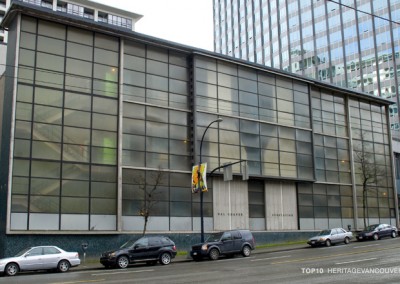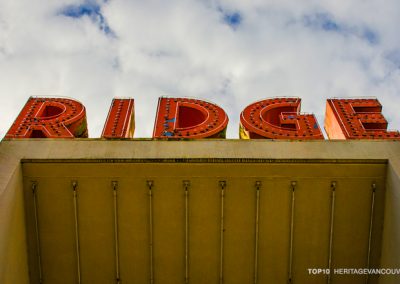Many of these beloved community landmarks are now threatened with demolition, for reasons that defy common sense. The Vancouver School Board has stated that heritage is not high on their list of priorities, as they have already demonstrated through the demolition of Sir Charles Dickens School.
Significance
Why are Vancouver’s schools significant
(e.g., Kitsilano Senior Secondary School)
Vancouver has dozens of schools that are important heritage structures. These neighbourhood landmarks represent a variety of architectural styles and development periods in Vancouver’s history. They are located at the heart of each neighbourhood and in many cases are the largest, most significant and meaningful heritage landmarks in the community. They illustrate neighbourhood history and remain the centre of community activity, providing in many cases a continuous anchor to local history.
Our historic schools define our community identity and symbolize the value that we have placed in public education. They are highly valued by the community, and many of them are now threatened with demolition, among them Kitsilano Secondary School, which is one of the more significant school structures in Vancouver. It is listed on the City ofVancouver Heritage Register, and in the 2007 report “Vancouver Schools — Establishing Their Heritage Value” Kits Secondary scored 25 out of a possible 25 points — which places it in the ‘Superior’ category. This significant heritage school and community landmark has been an important place in Vancouver’s educational history and in the memory of many Kitsilano families.
This landmark structure was originally built on an impressive scale and reveals the high value the community placed on public education. Its main building is set prominently on a rise along West 10th Avenue. Adding to the imposing nature of the building are three stairways set into the school’s strikingly landscaped grounds. Each stairway consists of rounded concrete walls and columns leading from the sidewalk at the corner edges of the property onto the grounds of the school. An additional grand stairway centered on 10th Avenue leads to the main entrance. Of particular interest are the three arched recessed entrances facing 10th Avenue, of which the main central entrance is adorned with the school name and leads into an inner lobby displaying a student memorial to those who died fighting in WWII. The building’s interior was designed to be naturally lit, with high ceilings, which permit large operable windows and good ventilation and broad hallways boasting natural light.
The original main three-storey structure facing 10th Avenue was designed by Vancouver VSB staff architect Frank A.A. Barrs and built between 1926 and 1927, in the Collegiate Gothic style popular for learning institutions at the time.
In 1958, as the neighbourhood grew to accommodate the post-WWII housing construction boom, a Modernist-style addition designed by school architect Allan B. Wilson was erected to the south side of the original building.
Later, a third expansion occurred in 1973 with the addition of a single storey exposed concrete structure on the southeast corner of the property. All of these annexes revealed changing approaches to both education and architecture.
Threat
What is the threat to Vancouver Schools
(including Kitsilano Senior Secondary)?
Many of these beloved community landmarks are now threatened with demolition, for reasons that defy common sense. The province’s Education Seismic Mitigation Program has provided a pool of money to ensure that school environments are made safer from earthquake damage. While this is an admirable and significant initiative that we highly support, the Vancouver School Board has chosen to take this opportunity to replace, rather than upgrade schools. This is a costly and wasteful approach that flies in the face of sustainability concerns as well as heritage considerations. The Vancouver School Board has stated that heritage is not high on their list of priorities, as they have already demonstrated through the demolition of Sir Charles Dickens School.
This year Heritage Vancouver is highlighting the situation of Kitsilano Senior Secondary School located at 2550 West 10th Avenue, as one of Vancouver’s schools that it imminently threatened with demolition. This is just one example as there are many other schools throughout the city that face a similar fate.
In February 2010, The Vancouver School Board released their preferred concept design for Kitsilano Senior Secondary at a public open house. This concept would only retain the front and side facades of the 1927 Block, including some grounds in front of the Block. All other buildings on the site, including the 1927 Block’s interior, would be completely demolished.
The Board announced that it plans to make a decision on the future of this important school by May 2010. There has been minimal neighbourhood consultation to date and there is no indication whether the revised option will be presented for additional public comment or review.
History
In 2005, the BC Ministry of Education introduced the Education Seismic Mitigation Program to seismically upgrade or replace schools at risk from earthquake damage, The Ministry applied a funding formula that limits the cost of a seismic retrofit to 70% of the cost of the construction of a new ‘purpose built school’. The new schools usually have 2/3rd of the square footage of the existing school.
In 2007, the City of Vancouver and the Vancouver School Board contracted with Commonwealth Historic Resource Management Limited to produce a document entitled “Vancouver Schools – Establishing Their Heritage Value”. This study undertook a casual heritage assessment of all Vancouver’s schools with the objective of identifying and prioritizing schools with heritage significance. This was to ensure that decisions to upgrade or replace schools are informed by potential heritage values. The recommendations of this report have yet to be approved. In August 2008, the Vancouver School Board contracted with Commonwealth Historic Resource Management Limited to write a Statement of Significance for Kitsilano Secondary School.
In September 2008, The Provincial School Building Closure and Disposal policy was created to limit school districts’ ability to dispose of school properties without government approval.
In February 2009, the Kitsilano Parent Advisory Council and its School Renewal-Seismic Mitigation Committee, in collaboration with the Vancouver School Board, hosted a survey, a public open house and a public workshop regarding the options of school seismic mitigation/renewal for Kitsilano Secondary School with the objective of creating the concept of what the ideal neighbourhood school might look like.
In March 2010, the Vancouver School Board held an open house at Kitsilano Senior Secondary to present various seismic upgrade options, including their preferred option. There were other options presented that included more significant heritage retention. About 250 people attended the open house, with about 120 leaving comments on the various options. Once all feedback has been received, the preferred option will be updated. The deadline for comments was March 10, 2010.
Position
Heritage Vancouver’s Position
We must have safe learning environments in our educational system, but we should not needlessly sacrifice our heritage schools.
Many applicable and local examples exist on how we can preserve our heritage schools in a financially-prudent manner without endangering our children or causing irreparable damage to our community’s shared identity. Heritage preservation can be a positive sum equation if done with proper planning, respect, and creativity.
Heritage Vancouver supports the seismic upgrading and the restoration of both the 1927 Block and grounds that ensure Kitsilano Secondary will continue to be a superior educational institution and a community landmark, and urges the Vancouver School Board to retain and seismically upgrade Kitsilano Senior Secondary School in a more meaningful way.
The current preferred concept would retain only three facades of the school. There are other options that retain all or part of the historic interior. Specific consideration should be given to interior features, such as the stairways and original doorways, to retain them in situ. It is important to understand that the existing interior of the 1927 Block can be upgraded to support a 21st Century learning environment while also preserving the interior’s heritage characteristics – these are not mutually exclusive goals.
The Vancouver School Board has not yet developed a comprehensive plan for how to approach their seismic upgrade projects. There appears to be a different set of rules for each individual school, rather than a coordinated approach. It is time for the Vancouver School Board to look at more effective ways to coordinate this significant process that will see an expenditure of up to one billion dollars of public money. A very successful model has been provided by the “UBC Renew” project, which has identified methods that upgrade existing buildings at a cost lower than complete replacement.
The Vancouver School Board refuses to recognize alternative methods of achieving seismic compliance, and is spending way beyond its capacity. In other jurisdictions, including Victoria, schools are being sequentially emptied and seismically upgraded, resulting in minimal disruption and no demolition.
The Ministry of Education could assist this process by reviewing the intent of the Education Seismic Mitigation Program to determine if the goals of the program are being met. It appears that one of the unintended outcomes of this program is the loss of many of Vancouver’s heritage schools. Heritage BC has reported that the demolition of schools as part of the seismic upgrading process is primarily a Vancouver issue.
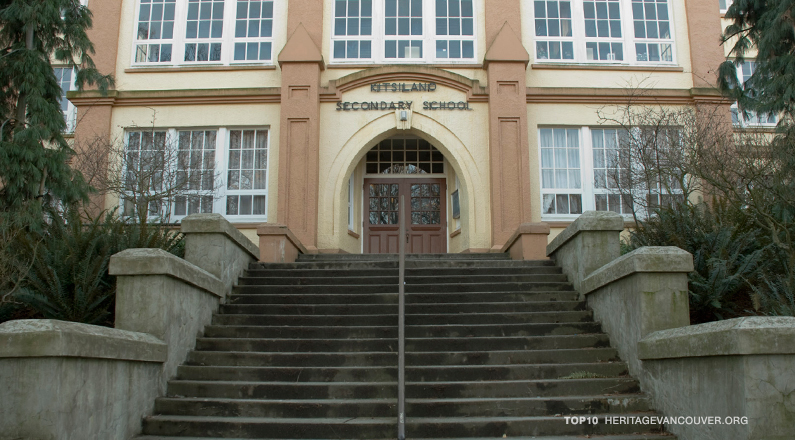

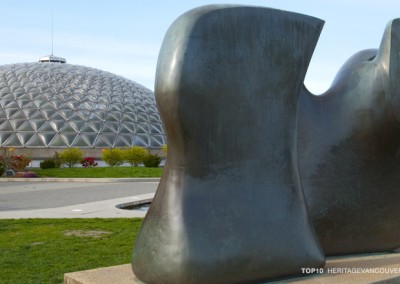
![3. Sir Guy Carleton School – Carleton Hall (1896) [saved]](http://heritagevancouver.org/wp-content/uploads/2011/11/HVS-Top10-795x440-carleton-400x284.jpg)
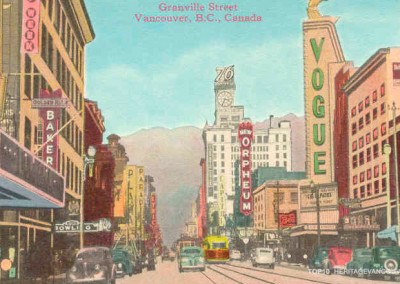
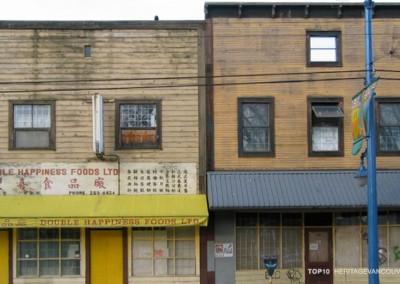
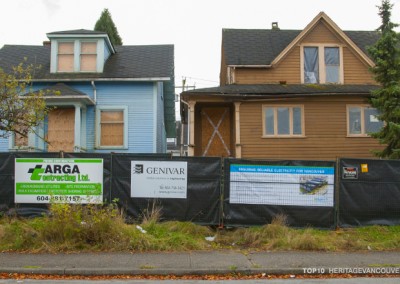
![7. Pantages Theatre (1907) [lost]](http://heritagevancouver.org/wp-content/uploads/2016/05/t10-pantages-B-795-400x284.jpg)
